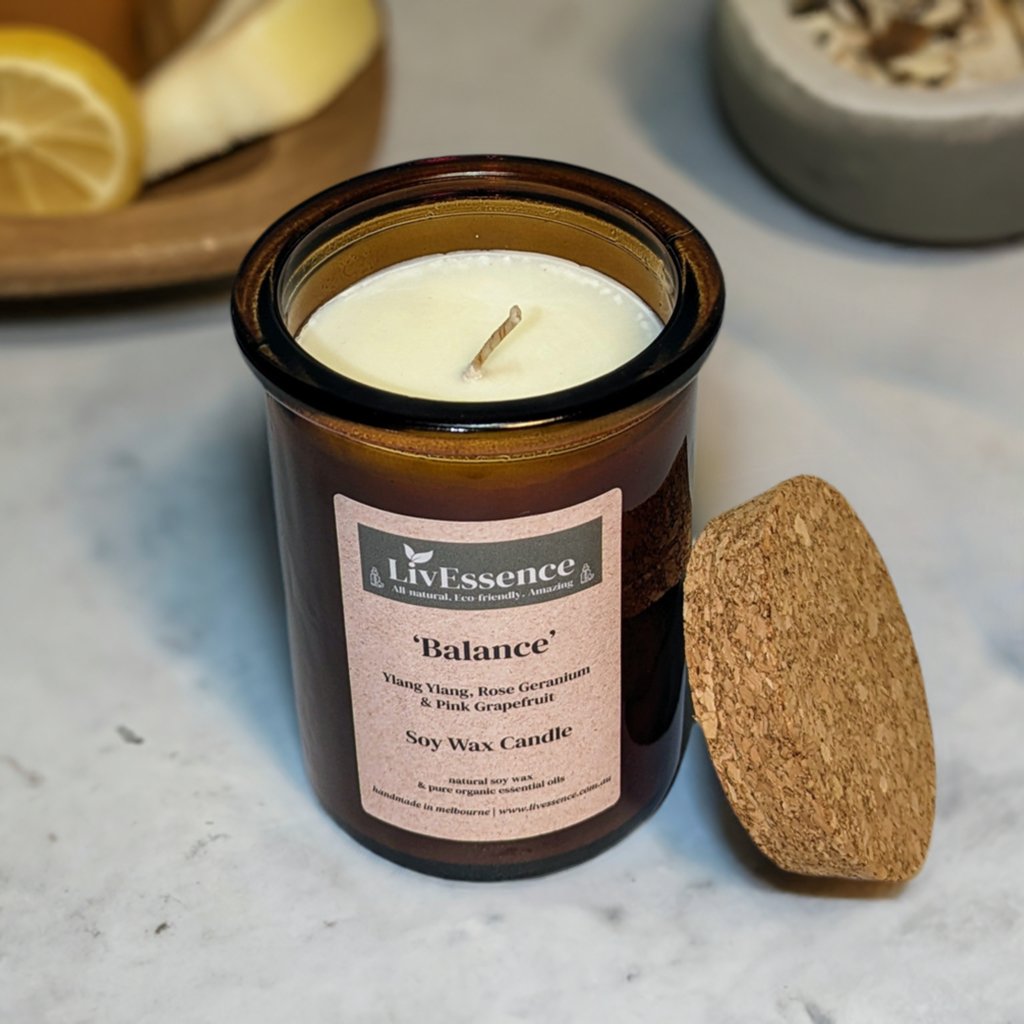Transform Your Home with Eco-Friendly Soy Candles and Home Fragrance
Transform Your Home with Eco-Friendly Soy Candles and Home Fragrance
Blog Article
From Wick to Wax: Comprehending the Chemistry Behind Soy Wax Candles and Their Ecological Effect
As we illuminate our rooms with the cozy glow of candle lights, there lies a world of detailed chemistry behind the relatively simple act of lighting a soy wax candle. The selection in between soy and paraffin wax expands beyond plain visual appeals, delving into the realm of ecological impact and the very make-up of the products. Understanding the molecular structure of soy wax and its combustion procedure sheds light on the discharges released right into our environments. Join us as we decipher the clinical ins and outs behind soy wax candle lights and explore their ramifications on our setting.
Soy Wax Vs. Paraffin Wax
When comparing soy wax and paraffin wax for candle production, it is necessary to understand the distinctive qualities and benefits of each material. Soy wax is an all-natural, renewable energy stemmed from soybean oil, making it biodegradable and green - home fragrance. On the other hand, paraffin wax is a by-product of oil refining, which raises worries regarding its ecological influence and sustainability
Soy wax candle lights melt cleaner and produce much less soot compared to paraffin wax candles, making them a much healthier option for indoor air high quality. Additionally, soy wax has a reduced melting point, permitting a longer-lasting candle light that spreads scent better. Paraffin wax, on the various other hand, tends to burn faster and much less easily, possibly launching damaging chemicals into the air.
From a sustainability perspective, soy wax is favored for its biodegradability and eco-friendly sourcing, aligning with the expanding customer preference for ecologically aware items. While paraffin wax has been a traditional choice in candle making because of its affordability and ease of usage, the shift towards environmentally friendly alternatives like soy wax is obtaining momentum in the sector.
Chemical Structure of Soy Wax

Burning Refine in Soy Candles
The chemical composition of soy wax directly influences the burning process in soy candles, impacting variables such as melt time, aroma release, and ecological effect. When a soy candle light is lit, the warm from the flame thaws the wax near the wick. This liquid wax is after that created the wick due to capillary activity. As the liquid wax gets to the fire, it goes through and vaporizes burning. The combustion procedure involves the vaporized hydrocarbons in the wax responding with oxygen in the air to create warm, light, water vapor, and carbon dioxide.
The burning effectiveness of soy candles is affected by discover this the pureness of the soy wax and the high quality of the wick. In addition, soy wax candles have a reduced ecological effect contrasted to paraffin candles due to their biodegradable and renewable nature.

Environmental Benefits of Soy Wax

Considered a lasting choice to traditional paraffin wax, soy wax uses remarkable ecological advantages that make it a popular choice amongst eco-conscious customers. One substantial benefit of soy wax is its eco-friendly sourcing. Soy wax is stemmed from soybean oil, which is mostly cultivated visit this page in the USA. The farming of soybeans helps support regional farmers and minimizes the dependence on non-renewable fossil gas made use of in paraffin wax manufacturing. Additionally, soy wax is naturally degradable, indicating it damages down normally without releasing hazardous contaminants right into the atmosphere. This particular makes soy wax candles a more eco-friendly option contrasted to paraffin wax candle lights, which are made from oil, a non-renewable source. Soy wax burns cleaner and generates less residue than paraffin wax, contributing to much better interior air high quality and decreasing the requirement for cleansing and upkeep. Generally, the environmental benefits of soy wax straighten with the growing need for lasting and environmentally friendly products on the market.
Recycling and Disposal Considerations
Reusing and proper disposal of soy wax candles play a crucial duty in preserving ecological sustainability and minimizing waste in neighborhoods and houses. The initial step is to make sure that the candle light has actually shed totally when it comes to recycling soy wax candle lights. This can be attained by permitting the candle light to burn up until the wick is no more useful, and afterwards allowing the staying wax cool and strengthen. Once the wax has solidified, it can be carefully eliminated from the container.

In regards to disposal, if recycling is not an alternative, soy wax candle lights are naturally degradable and can be safely dealt with in a lot of family waste systems. However, it is always recommended to get in touch with neighborhood reusing facilities or waste management from this source services for details standards on candle light disposal to make certain proper handling and environmental management.
Verdict
In verdict, the chemistry behind soy wax candles exposes their environmental advantages over paraffin wax candle lights. Soy wax, acquired from soybean oil, burns cleaner and produces less residue when contrasted to paraffin wax.
When contrasting soy wax and paraffin wax for candle making, it is important to recognize the unique characteristics and benefits of each product (candles).Soy wax candle lights shed cleaner and emit much less residue compared to paraffin wax candle lights, making them a much healthier option for indoor air quality.Considered a lasting alternative to conventional paraffin wax, soy wax uses notable ecological advantages that make it a prominent choice amongst eco-conscious consumers. Soy wax burns cleaner and generates less residue than paraffin wax, contributing to better indoor air top quality and lowering the need for cleansing and upkeep.In conclusion, the chemistry behind soy wax candle lights reveals their ecological advantages over paraffin wax candles
Report this page